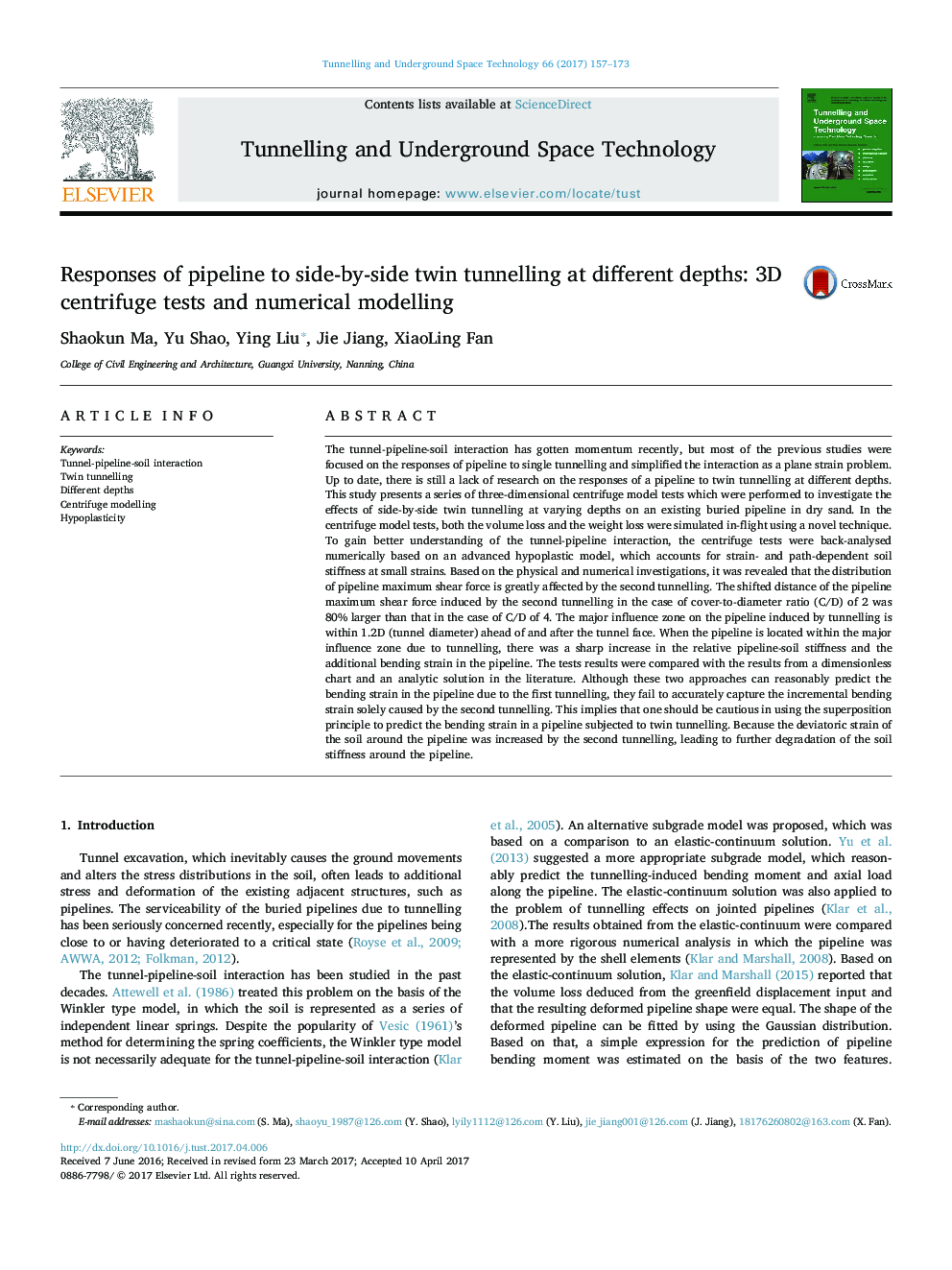| کد مقاله | کد نشریه | سال انتشار | مقاله انگلیسی | نسخه تمام متن |
|---|---|---|---|---|
| 4929338 | 1432280 | 2017 | 17 صفحه PDF | دانلود رایگان |
عنوان انگلیسی مقاله ISI
Responses of pipeline to side-by-side twin tunnelling at different depths: 3D centrifuge tests and numerical modelling
دانلود مقاله + سفارش ترجمه
دانلود مقاله ISI انگلیسی
رایگان برای ایرانیان
موضوعات مرتبط
مهندسی و علوم پایه
علوم زمین و سیارات
مهندسی ژئوتکنیک و زمین شناسی مهندسی
پیش نمایش صفحه اول مقاله

چکیده انگلیسی
The tunnel-pipeline-soil interaction has gotten momentum recently, but most of the previous studies were focused on the responses of pipeline to single tunnelling and simplified the interaction as a plane strain problem. Up to date, there is still a lack of research on the responses of a pipeline to twin tunnelling at different depths. This study presents a series of three-dimensional centrifuge model tests which were performed to investigate the effects of side-by-side twin tunnelling at varying depths on an existing buried pipeline in dry sand. In the centrifuge model tests, both the volume loss and the weight loss were simulated in-flight using a novel technique. To gain better understanding of the tunnel-pipeline interaction, the centrifuge tests were back-analysed numerically based on an advanced hypoplastic model, which accounts for strain- and path-dependent soil stiffness at small strains. Based on the physical and numerical investigations, it was revealed that the distribution of pipeline maximum shear force is greatly affected by the second tunnelling. The shifted distance of the pipeline maximum shear force induced by the second tunnelling in the case of cover-to-diameter ratio (C/D) of 2 was 80% larger than that in the case of C/D of 4. The major influence zone on the pipeline induced by tunnelling is within 1.2D (tunnel diameter) ahead of and after the tunnel face. When the pipeline is located within the major influence zone due to tunnelling, there was a sharp increase in the relative pipeline-soil stiffness and the additional bending strain in the pipeline. The tests results were compared with the results from a dimensionless chart and an analytic solution in the literature. Although these two approaches can reasonably predict the bending strain in the pipeline due to the first tunnelling, they fail to accurately capture the incremental bending strain solely caused by the second tunnelling. This implies that one should be cautious in using the superposition principle to predict the bending strain in a pipeline subjected to twin tunnelling. Because the deviatoric strain of the soil around the pipeline was increased by the second tunnelling, leading to further degradation of the soil stiffness around the pipeline.
ناشر
Database: Elsevier - ScienceDirect (ساینس دایرکت)
Journal: Tunnelling and Underground Space Technology - Volume 66, June 2017, Pages 157-173
Journal: Tunnelling and Underground Space Technology - Volume 66, June 2017, Pages 157-173
نویسندگان
Shaokun Ma, Yu Shao, Ying Liu, Jie Jiang, XiaoLing Fan,